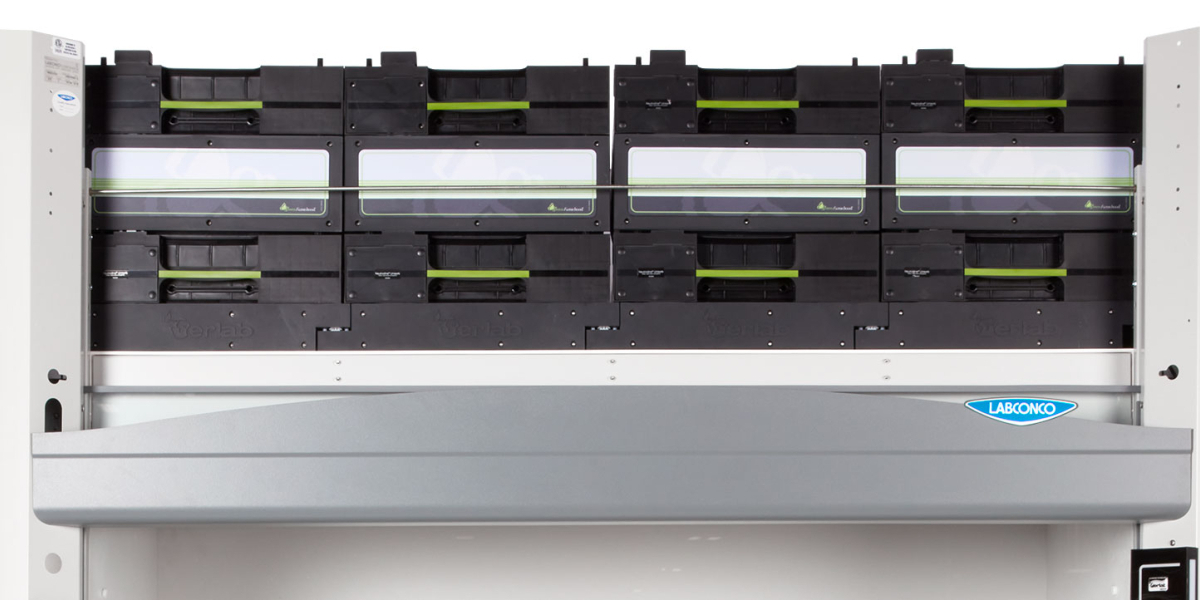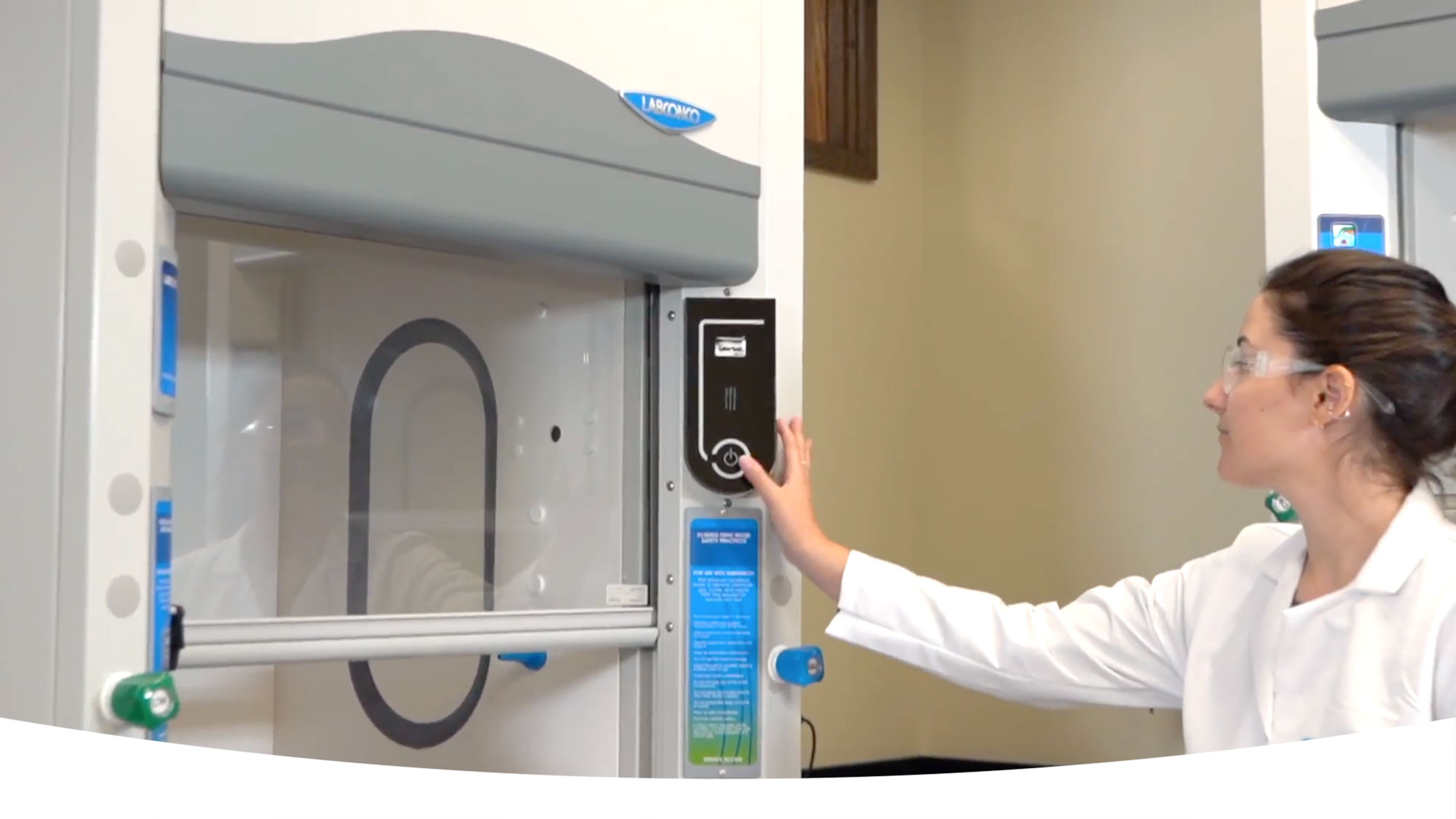Cost Comparison: Budgeting for a Filtered Fume Hood

Decisions for new laboratory equipment are frequently based on budgeting instead of equipment needs or features. Initial upfront costs can potentially prevent lab managers or users from getting the equipment they prefer or updating equipment when they should; however, the benefits of greatly lowered costs in the future more than justify a higher cost in the beginning.
Filtered Fume Hood as an Option
Equipment and installation budgeting can be especially difficult for labs in hard-to-reach locations such as basements, interior rooms of tall buildings, or in older buildings with established infrastructure in place. Protector® Echo™ Filtered Fume Hoods require no ducting, eliminating the costs and hassles of setting up new ductwork throughout a building. The Echo also provides the flexibility to be moved around the lab since it is not connected to ductwork, meaning it won’t be affected by the existing infrastructure or require any construction and major installation costs. This makes them ideal for modular labs or temporary spaces during construction or renovation projects. Install them in one location for temporary laboratories and then move them to the permanent lab when it’s completed.
The Echo combines the fully-featured, patented containment-enhancing design of Labconco’s Protector Hoods with Erlab®’s GreenFumeHood® (GFH) Filtration Technology. Through the use of Neutrodine® Unisorb Filters, the Echo efficiently filters more than 700 chemicals. Because it can handle solvents, acids and bases simultaneously, it can be used for a broad range of applications, providing the abilities of a traditional fume hood without the restrictions of being attached to the ceiling or the high costs of exhausting the lab’s tempered air. Specialized models with sensors for acids or formaldehyde further the safety these hoods provide. A HEPA filter is available for particulate removal.

How the Budget is Affected
Costs for a traditional fume hood set up include the hood, the remote blower, and the cost of continually exhausting air out of the laboratory while forcing make-up air in. For a standard 6’ benchtop hood running at 100 fpm with an 18” sash opening, the make-up air alone can cost $5880 per year* (based on 735 CFM and $8/CFM). The cost of exhausting the air out with an average blower (1 HP, 2” static pressure) running 24 hours a day 365 days a year can add nearly $1400 in additional costs each year. Annual certifications for a traditional hood are another $1200. So the total cost for a single traditional hood’s operation and maintenance can average almost $8500 every year!* Labs with multiple fume hoods can spend tens or hundreds of thousands on these costs annually.
Comparatively, the Protector Echo Filtered Fume Hood requires zero make-up air. It filters the air and puts it right back into the room. An exhaust fan draws the air through the filters and, since the air is returning into the room, the annual energy cost drops to less than $300. Annual certifications aren’t needed because there is no ducting or blower. The majority of the approximate $1800 in annual maintenance cost goes into replacing the Neutrodine Unisorb Filters, which can last anywhere from 2 to 5 years. This gives a total average cost for the Echo’s operation and maintenance of just $2100 per year. That’s an annual savings of $6400, or 75% per hood! Although the initial cost of a filtered fume hood may be higher than some traditional hoods, the Echo fully pays for itself in energy savings in less than 3 years.
Comparing the Cost Over Time
When looking for your next fume hood, don’t forget to include maintenance and operating costs—you may be surprised by what you find. Use the following “Cost Comparison” chart to support your request for a fully-featured fume hood with no ducting required:

* Figures do not include potential savings due to reduced chiller capacity resulting in a lower chilled water load.
- Cost comparison is based on new construction and includes estimated 2015 costs per 6’ fume hood with a vertical-rising sash configuration and utility connections including compressed air, lab vacuum, natural gas, electrical power and data. Costs for the CV, VAV, and VAV HP include the remote blower. Cost for the Filtered Hood includes the first set of filters.
- National Grid and other local and national utility companies provide a first time equipment cost rebate of up to 70% of the difference in cost between a conventional constant volume by-pass hood and a filtered fume hood. Energy rebate savings are not included in the figures above.
- Estimated building infrastructure cost (M-E-P Data) per fume hood based on new building construction with approximately 100 fume hoods.
- Estimated electrical energy costs per year per fume hood. Assumes fans operate 24 hours/day, 365 days/year, 8760 hours/year at $0.12kWh. Fan specified is 1 HP, 2” static pressure. Equivalent electrical load for NEC Article 430/full load current at 460 volts/3 phase/2.1 amps – 1.3 kWh.
- Estimated mechanical energy cost per year per fume hood: 6’ CV (1,200 CFM x $8.00/CFM/year=$9,600); 6’ VAV (800 CFM x $8.00/cfm/year=$6,400); 6’ VAV HP (624 CFM x $8.00/CFM/year=$4,992).
- Maintenance costs for CV, VACV and VAV HP includes yearly certifications. Costs for Filtered Hood includes filter replacement.
Cost comparison data prepared by Ellensweig Architects in collaboration with BR+A Consulting Engineers, R.W. Sullivan Engineering and Vanderweil Engineers. Cost data was updated in 2015. The cost savings illustrated above do not take into account possible additional savings associated with a reduced floor to floor height related to possible reduced HVAC ductwork.
| chevron_left | Neutrodine Filters by Erlab | Articles | When to recommend a portable, ductless fume hood | chevron_right |





